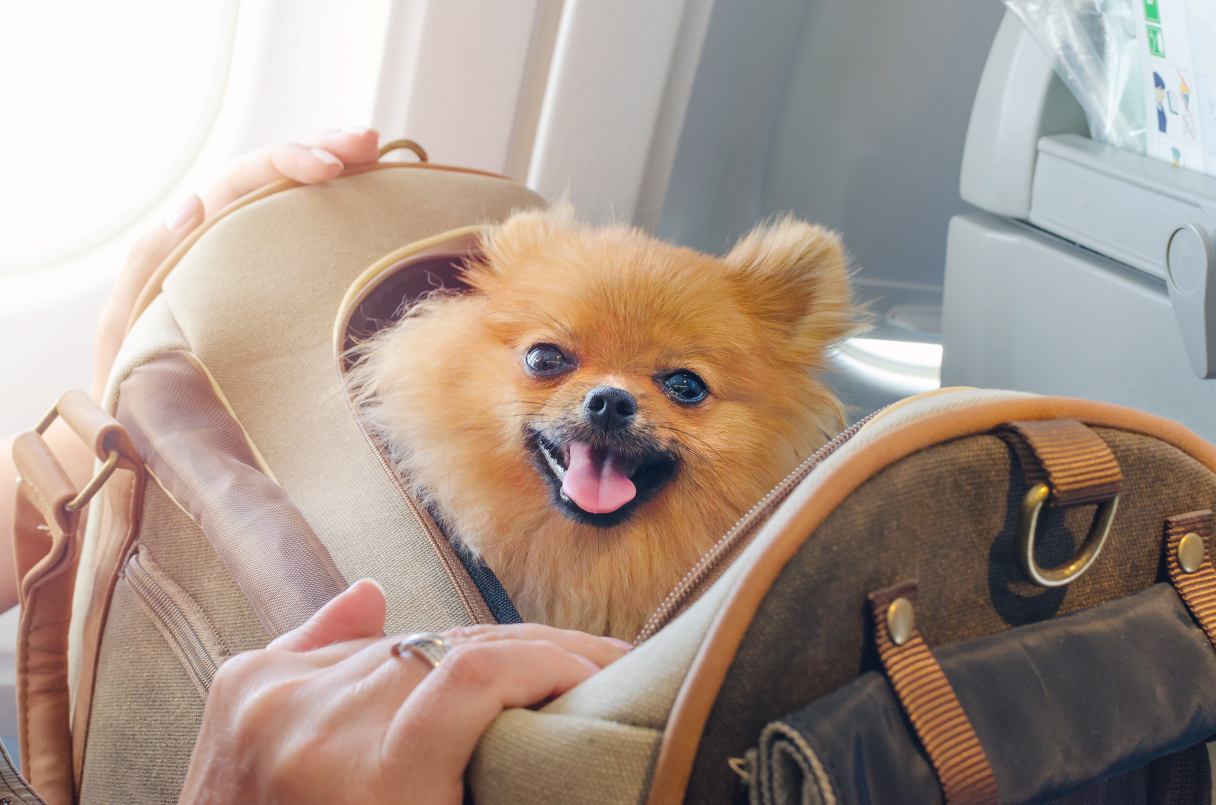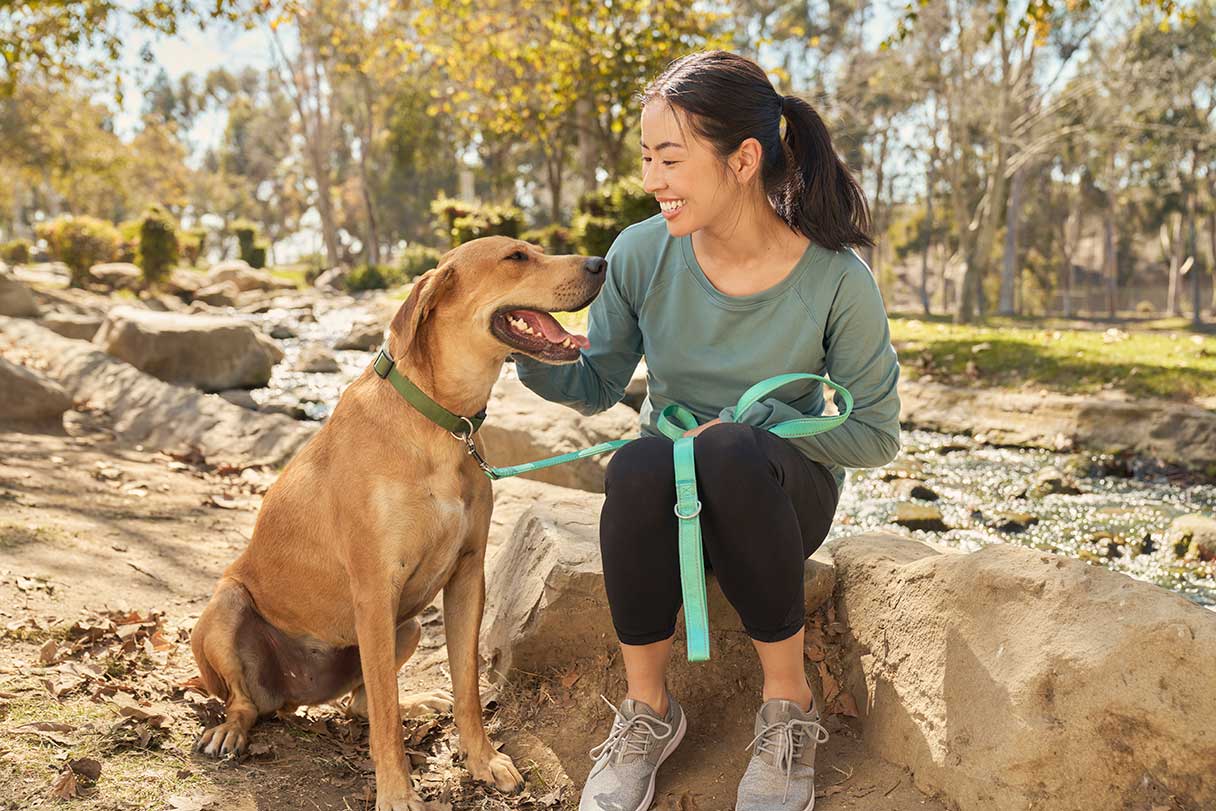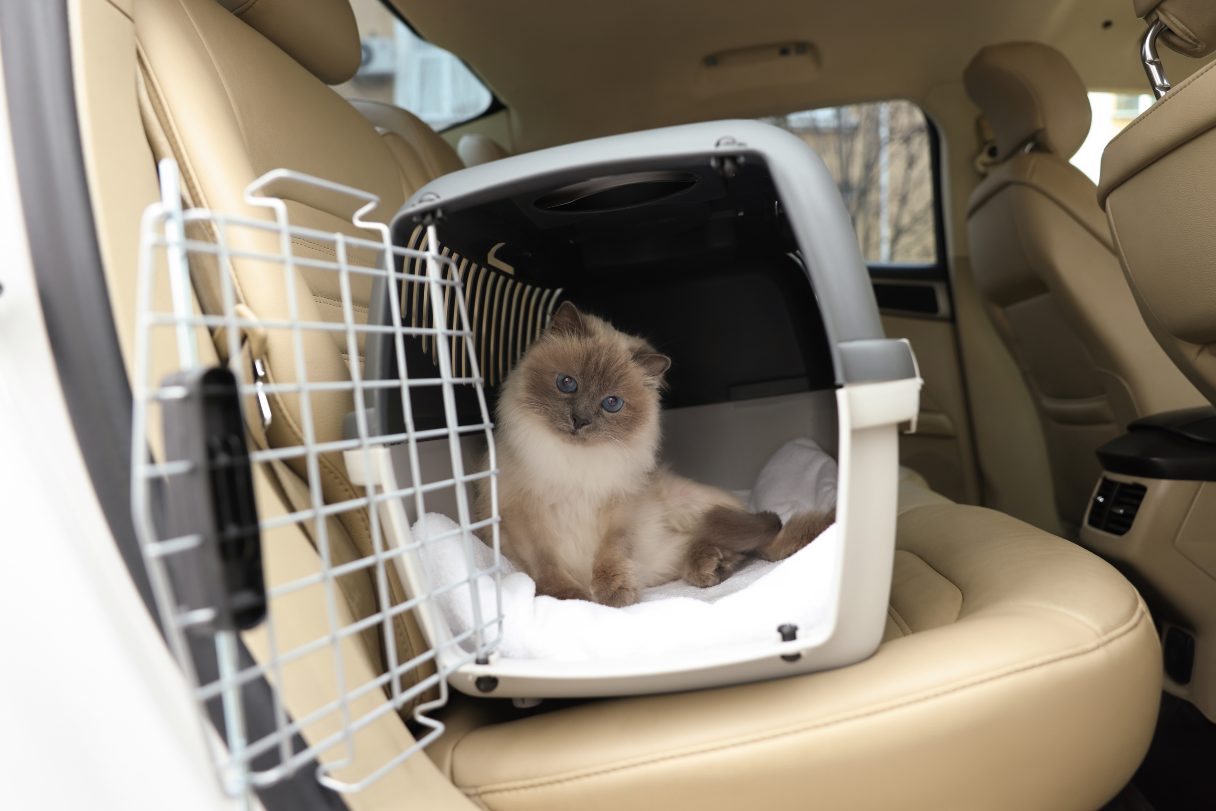Whether you’re jetting off for a weekend getaway or relocating abroad, leaving your dog or cat behind is often not an option. With the right prep, flying with your pet can be smoother and less stressful. From airline policies to animal entry regulations, pet wellness to in-airport amenities, there’s a lot to consider.
This guide offers essential tips for first-time flyers, international travelers and anyone looking to make air travel safe, comfortable and even enjoyable for both themselves and their dog or cat.
Preparing to Fly With a Pet
A pre-travel veterinary check-up is essential to review your pet’s medical history and overall health. Pets with certain conditions, such as heart disease, respiratory problems, seizures, diabetes, or severe anxiety may not be able to tolerate the stress of air travel safely. In these cases, the most responsible choice may be to reconsider their trip — because animal welfare should always come first.
Help set your pet up for success with these essentials:1
- Assemble a pet travel kit with food, a bowl, plastic waste bags and medication.
- Bring a familiar bed, blanket or favorite toy to help your pet feel more at ease.
- Don’t forget a leash or harness! This is especially important if you’ll be outdoors more than usual.
- Make sure your pet is microchipped and wearing a collar with an ID tag that includes your name and phone number.
- Maintain your pet’s typical feeding schedule. Cats and dogs are very routine-oriented, so staying on track as much as possible with meals will help them feel more comfortable during travel.
- Use a well-ventilated, secure crate or carrier that meets the standards of the International Air Transport Association Live Animals Regulations (IATA-LAR). Dogs and cats must be transported in a container that complies with container requirement #1 (CR#1). Be sure to label it clearly with your contact info.
If you’re flying, book a direct flight whenever possible and notify the airline in advance — most airlines limit how many pets can fly in-cabin per flight. Never assume your pet will be allowed without confirmation from the airline.
If traveling via cargo, make sure that you comply with airline live animal cargo policies, such as temperature restrictions, restricted breeds and the drop-off/pickup times and locations.
International travel
International travel requires even more preparation when flying with a pet. Most countries have strict entry rules for animals, including health certifications, vaccines, microchipping, diagnostic tests (such as a rabies titer) and may even require quarantine periods after arrival.2
Some additional tips when flying internationally with your pet include:2
- Begin by researching your destination’s specific requirements. (Start early —some take months to fulfill.) The USDA Pet Travel Website is a helpful resource.
- Obtain the services of a USDA-Accredited Veterinarian to complete the health certificate requirements for your pet.
- Check if your pet needs a microchip that meets International Organization for Standardization (ISO) requirements. These standards ensure microchips are compatible with worldwide scanners.
- Make digital and paper copies of all documents for easy access while traveling.1
- Secure a health certificate and additional paperwork from your vet.
- Update all required vaccines, like rabies, well before your trip.
You and your veterinarian should work together to determine the requirements for the destination state or country. Each airline and country differs and can change at any time, so always confirm the latest regulations before you book.
Tips for First-Time Pet Flyers
If it’s your first time flying with your pet, it helps to ease them into the experience and for you to know what to expect ahead of time. If you get frazzled by an unexpected hiccup, your pet may also get even more anxious.
A few tips:
- Let your pet explore their carrier weeks before the trip so it becomes a familiar and safe space.3
- Smaller pets can often fly in-cabin under your seat; larger pets must fly in the cargo hold. Know your airline’s specific policies and restrictions. On that note, make sure your pet carrier complies with your airline’s requirements: size, ventilation and under-seat fit matter.3
- To reduce nausea, avoid feeding your pet right before the flight. Flying on an empty stomach is typically easier.
Emotional Support (ESA) and Service Animals
Airlines have tightened their rules around emotional support animals (ESAs) in recent years. Most airlines in the United States no longer accept ESAs for free travel; they’re now considered pets and must pay standard fees. Be cautious of misleading ESA certifications — fraudulent claims can result in denied boarding or fines.
That being said, service animals (trained to assist with a disability) are still protected under the Air Carrier Access Act. Expect to complete and submit Department of Transportation forms before your flight.4
If you’re unsure whether your animal qualifies, contact your airline directly and ask for their most up-to-date service animal requirements.
Vet Checklist for Pet Travel
A pre-travel vet visit is essential to confirm your pet is healthy enough (medically fit) to fly. While you’re there, ask/confirm:
- Are your pet’s vaccinations up to date?
- Can your vet provide a copy of your pet’s medical records?
- How can you access veterinary care away from home?
- Is your pet healthy enough to travel?
- What kind of medications, sedatives or alternatives (e.g., a Thundershirt® or pheromone) are best to help your pet feel less stressed and anxious while traveling? Note that any medication that causes sedation is not approved for transporting pets via cargo.5
- What can you do to help a larger pet feel safer and more comfortable if it must fly in the cargo hold rather than the main cabin?
Veterinarians can also help you build a travel plan that includes hydration, anxiety relief and how to handle unexpected illness on the road.
Pet Travel Tools and Apps
These tools can be very helpful in planning a pet-friendly trip:
- BringFido. Find pet-friendly hotels, restaurants, parks and more.
- Pet First Aid. The American Red Cross designed this to assist pet owners in emergencies. It offers vet locator tools, first aid advice and other emergency help.
Flying With a Dog or Cat
With thoughtful planning and the right resources, flying with your pet can be a positive and low-stress experience. From booking direct flights and getting paperwork together to easing anxiety with familiar items and calming strategies, it’s all about preparation to help ensure a safe, comfortable trip for you both.
CareCredit Credit Card Financing for Pets
The CareCredit credit card provides a convenient way to pay for your pet’s vaccinations and other health and wellness expenses, including exams, medications and products at providers in the CareCredit network.* Continue your wellness journey by downloading the CareCredit Mobile App. You can find a provider on the go, manage your CareCredit account and easily access the Well U blog for more great articles, podcasts and videos. Use our Acceptance Locator to find a veterinarian that accepts CareCredit to help keep your pet healthy and happy for a lifetime of love.
In addition to pet care, you can also use your CareCredit credit card for dentistry, cosmetic, vision, hearing, health systems, dermatology, pharmacy purchases, spa treatments and so much more within the CareCredit network. How will you invest in your health and wellness next?
Expert Reviewer
Dr. Nelva J. Bryant, D.M.V., M.P.H.
Dr. Nelva Bryant is a nationally recognized airline industry veterinarian with 30+ years of experience in veterinary public health, regulatory compliance and animal air transport safety. She is the CEO and founder of When Pets Fly® and leads DVM Transportation Consultants LLC, advancing animal welfare in air travel, compliance and low-stress transport strategies that protect both animals and their journeys. A former leader within the CDC and a retired commissioned officer in the U.S. Public Health Service, Dr. Bryant is an AAHA Mission Partner and Fear Free® certified professional. She educates veterinarians nationwide on pet-centric travel preparation, health certificate compliance and low-stress travel strategies that prioritize animal welfare.
Author Bio
Abbie Mood is a freelance writer with more than 15 years of experience. She has worked with clients of all sizes to create compelling content and she has written for the American Kennel Club, Marriott Bonvoy, Women’s Health Online, Headspace and more.







